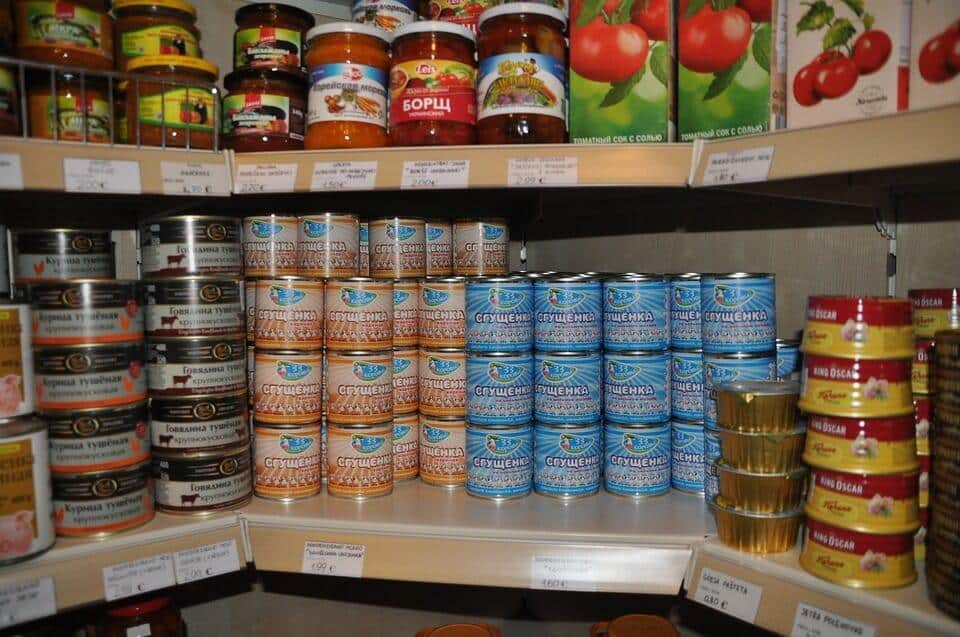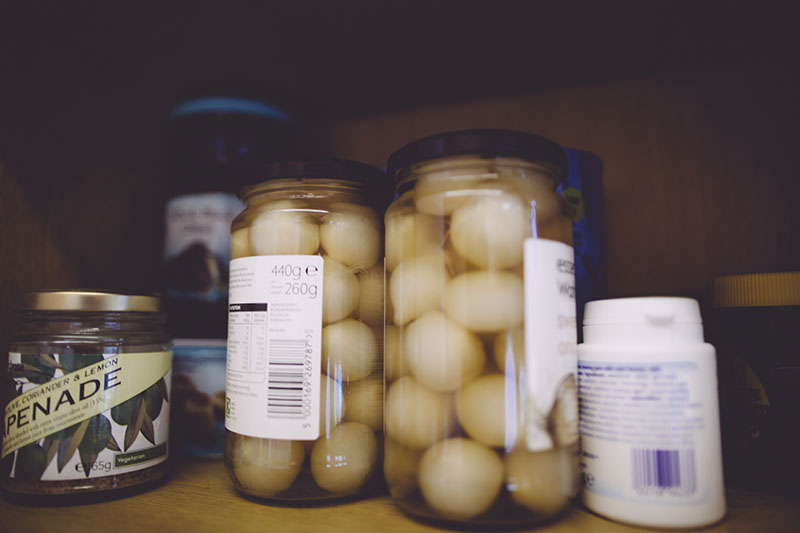Introduction
Preparing for potential disasters, emergencies, or even just unexpected events has become a popular trend in recent years. Many people have taken to stockpiling supplies, learning survival skills, and creating emergency plans to ensure they are ready for whatever may come their way. However, some have raised concerns that these actions may be indicative of hoarding tendencies. In this blog post, we will explore this topic and examine whether preppers are truly hoarders or if their actions are justified.

Preppers
Preppers are individuals who are ready and prepared for emergencies, typically by stockpiling food, water, and supplies. They may also have a plan for how to evacuate and where to go if an emergency happens. Some people may think that preppers are hoarders, but they are not.
Who are preppers?
Preppers are people who habitually prepare for emergencies, typically by stockpiling food, water, and other supplies. They may also have a mental or physical plan for dealing with an emergency situation.
What do preppers do?
Preppers are people who take steps to prepare for emergencies, both large and small. They stock up on food, water, and supplies, and might also have a plan for how to stay safe and comfortable during an emergency.
Prepping is about being prepared for anything that might come your way, whether it’s a natural disaster, an economic crash, or a personal emergency. It’s about being self-sufficient and having the skills and supplies you need to survive on your own, if necessary.
Preppers are often mistaken for hoarders because they tend to have a lot of supplies on hand. But there’s a big difference between hoarding and prepping. Hoarders collect things they think they might need someday, regardless of whether those things are actually useful or not. Preppers carefully select their supplies based on what they think they’ll need in an emergency.
Another difference between preppers and hoarders is that preppers are usually willing to share their supplies with others, whereas hoarders tend to be secretive and mistrustful of others. Preppers know that in an emergency, everyone will be better off if everyone is prepared.
What do preppers believe?

Preppers, also known as survivalists, are a group of people who believe in being prepared for unexpected disasters, both natural and man-made. Prepping is a lifestyle that involves storing food, water, and other supplies, learning survival skills, and having a plan in place for emergencies. But what do preppers really believe? In this article, we’ll explore the core beliefs of preppers and why they choose to live this way.
First and foremost, preppers believe in self-sufficiency. They want to be able to provide for themselves and their families in the event of a disaster or emergency, rather than relying on outside help. This means having enough food, water, and other supplies to last for several weeks or even months. Preppers also believe in being able to defend themselves and their property, which is why many of them own firearms and participates in tactical training.
Another key belief of preppers is that a disaster can happen at any time. They don’t subscribe to the “it can’t happen to me” mentality. Instead, they recognize that life is unpredictable and that being prepared is the best way to ensure their survival. Preppers also believe that the government may not be able to help in the event of a disaster, or may even make the situation worse. They want to be able to rely on themselves and their community instead.
Preppers also believe in being environmentally conscious. They recognize that our planet is facing many challenges, including climate change, pollution, and overconsumption. By living a self-sufficient lifestyle, preppers are able to reduce their impact on the environment and promote sustainability. They often grow their own food, use renewable energy sources, and recycle and reuse as much as possible.
One of the most important beliefs of preppers is community. They recognize that in a disaster situation, it’s not just about individual survival, but about coming together as a community to support each other. Preppers often form groups and networks with other like-minded individuals, sharing knowledge, skills, and resources. They believe that by working together, they can increase their chances of survival and thrive in even the most difficult circumstances.
Why do preppers do what they do?
When it comes to prepping, there are a lot of misconceptions out there. One of the biggest is that preppers are hoarders. This couldn’t be further from the truth! Preppers are people who simply believe in being prepared for anything life may throw their way.
There are many reasons why someone might choose to live a more prepared lifestyle. For some, it’s simply a matter of peace of mind. Knowing that you have supplies on hand in case of an emergency can help to ease anxiety and stress.
For others, prepping is about being self-sufficient. They want to be able to take care of themselves and their families without relying on others. This might mean having supplies on hand in case of a natural disaster or being able to grow your own food in case of economic collapse.
Whatever the reason, preppers are not hoarders. They are people who believe in being prepared for whatever life may throw their way.
Hoarders
Preppers are not hoarders. Preppers are people who are prepared for an emergency situation. They have supplies, food, and water stored up in case of an emergency.
Who are hoarders?
Hoarders are people who excessively collect items, even if they are of no use or value. They may obsessively attempt to organize their collections but are unable to throw anything away. These hoarders live in a state of constant chaos, and their homes are often filled with piles of clutter and garbage. Some hoarders may also have a problem with animals, collecting dozens or even hundreds of pets that they cannot properly care for.
While anyone can be a hoarder, the disorder is most commonly seen in older adults. It is estimated that up to 6% of the population suffers from some form of hoarding disorder. However, only a small percentage of these hoarders seek treatment for their condition.
If you or someone you know may be a hoarder, it is important to seek help. Hoarding can severely impact an individual’s quality of life and cause serious health and safety risks. With proper treatment, however, many people are able to overcome their hoarding tendencies and live happier healthier lives.
What do hoarders do?
Most hoarders are extremely reluctant to get rid of their Things, even when those things are of no real value, or are actually rotting and dangerous. The reasons for this reluctance vary from person to person, but often it’s because the hoarder feels a strong emotional attachment to their Things, or because they believe that they will need those things someday.
In some cases, hoarders may rationalize their behavior by telling themselves that they are merely collecting items of value, or that they are protecting themselves and their loved ones from a future disaster. However, the reality is that hoarding often causes more harm than good.
Hoarding can lead to physical and mental health problems, financial problems, and relationship difficulties. It can also be dangerous, especially if the hoarder lives in a cluttered home where there is a risk of fire, trips, and falls, or exposure to harmful substances.
What are the 5 stages of hoarding?
Hoarding is a condition that affects millions of people worldwide. It is a disorder that causes individuals to accumulate excessive amounts of items, which can lead to unsanitary and unsafe living conditions. Hoarding can be a challenging condition to understand and manage, but by understanding the five stages of hoarding, individuals can take the necessary steps to address the issue before it becomes severe.
Stage 1: Clutter, but no concern
The first stage of hoarding is characterized by clutter, but no apparent concern from the individual. At this stage, the individual may have an excessive amount of items but does not see it as a problem. The clutter may be confined to a specific area of the home, such as a closet or spare room, and does not interfere with daily activities.
Stage 2: Deteriorating hygiene, possible hoarder
The second stage of hoarding is marked by deteriorating hygiene and a possible hoarding diagnosis. At this stage, the clutter has expanded beyond a specific area and is beginning to interfere with daily activities. The individual may have difficulty getting around the home due to the excessive clutter, and the living conditions may be unsanitary.
Stage 3: Extreme disorganization, likely disorder
The third stage of hoarding is characterized by extreme disorganization and a likely disorder diagnosis. At this stage, the individual is unable to control the clutter, and it has taken over their living spaces. The individual may have difficulty finding important items, and the clutter may pose a safety hazard.
Stage 4: Excessive clutter & behavior, contact professionals
The fourth stage of hoarding is marked by excessive clutter and behavior that requires professional intervention. At this stage, the individual’s behavior may be erratic, and they may become defensive when confronted about the clutter. The living conditions may be hazardous to the individual’s health, and professional help is necessary.
Stage 5: Severe unsanitary conditions, hoarding diagnosis
The fifth and final stage of hoarding is marked by severe unsanitary conditions and a hoarding diagnosis. At this stage, the individual’s living conditions are hazardous to their health and the health of others. The individual may have difficulty parting with any items, even those that are unsanitary or dangerous.
Hoarding often leads to infestations in the home
Hoarding is a serious issue that affects many people, often leading to infestations in their homes. Hoarding is defined as the excessive accumulation of objects or items, regardless of their value or usefulness, and the inability to discard them. This can lead to a variety of problems, including cluttered living spaces, health and safety risks, and infestations of pests. One of the most common problems associated with hoarding is infestations. When a person hoards items, they often do not keep their living space clean or tidy, which can attract pests such as rodents, insects, and other vermin. These pests can quickly multiply and spread throughout the home, causing damage and health hazards for the hoarder and those around them.
Rodents, in particular, are attracted to cluttered living spaces and can quickly establish nests and breeding grounds in the piles of clutter. They can carry diseases and contaminate food and other items in the home. Insects, such as cockroaches, can also infest the home and spread disease.
Hoarding can also lead to other health and safety risks. The cluttered living space can create tripping hazards, which can lead to falls and injuries. The clutter can also create fire hazards, as flammable materials can accumulate and create a risk for fires.
Hoarding can also impact mental health. The hoarder may experience anxiety and depression, and the cluttered living space can create feelings of overwhelm and helplessness. This can lead to a vicious cycle of hoarding, as the person may feel compelled to hold onto items as a way of coping with their anxiety.
It is important for hoarders to seek help and support to address their hoarding behaviors. This may involve therapy, medication, and professional cleaning services to help restore the home to a safe and livable condition. Family and friends can also provide support and encouragement to help the hoarder overcome their hoarding behaviors.
Why do hoarders do what they do?
Hoarding is a pattern of behavior that can be characterized by excessive acquisition and an inability or unwillingness to discard large quantities of objects that cover the living areas of a home and cause significant distress or impairment.
Hoarders often feel a need to save materials that others would consider to have little value, such as newspapers, plastic bags, clothes, or boxes. They may feel very attached to these items and feel distressed at the thought of getting rid of them. They may also feel safer when surrounded by the things they collect.
Hoarding disorder was first recognized as a distinct mental disorder in 2013, according to the Diagnostic and Statistical Manual of Mental Disorders, Fifth Edition (DSM-5). The American Psychiatric Association defines hoarding as “persistent difficulty discarding or parting with possessions because of a perceived need to save them.”
There are many different theories about why people hoard. It is thought to be related to Obsessive Compulsive Disorder (OCD) in some cases, but it is not clear how often this is true. Some research suggests that hoarders may have problems with decision-making, organizer skills, and perception. In addition, hoarders often have a family history of hoarding behavior, which suggests that there may be a genetic component.

The Difference between Preppers and Hoarders
Preppers and hoarders often get lumped together, but there is a big difference between the two. Preppers stockpile supplies in case of an emergency, while hoarders compulsively collect items and do not use them. Preppers focus on gathering supplies that will be useful in a crisis, while hoarders may collect anything and everything.
Preppers are not hoarders
Preppers are not hoarders, although some people may confuse the two. Hoarders are people who compulsively hoard stuff, even if they don’t need it or if it’s useless. They might have trouble getting rid of things, even if they’re rotting or infested with bugs. Preppers, on the other hand, are people who stock up on supplies in case of an emergency. They generally have a plan for how to use those supplies, and they’re not afraid to get rid of things that they don’t need.
Preppers are prepared
Preppers are people who believe in being prepared for disasters or disruptions in their normal way of life. They typically have a Plan B, C, and D and are always thinking about what-if scenarios. Hoarders, on the other hand, are people who compulsively hoard things because they feel the need to have everything just in case. For hoarders, the need to have everything often outweighs any logic or practicality.
Hoarders are not prepared
Hoarding is the unhealthy compulsion to acquire and hold on to large quantities of objects, even if those objects are of limited value. People who hoard typically do not live in clean or well-organized homes. Their living spaces are so cluttered that they can no longer use them for their intended purposes — cooking, sleeping, bathing, and so on.
Preppers, on the other hand, are people who have made the decision to be prepared for an emergency or disaster. They typically have a plan and supplies set aside in case of an emergency. Preppers are not hoarders because they only acquire what they need and use what they have.
If you cannot find an answer on our website to your question, feel free to message or call us!
